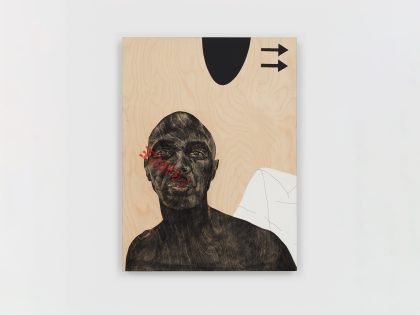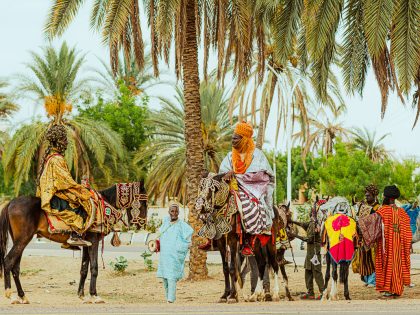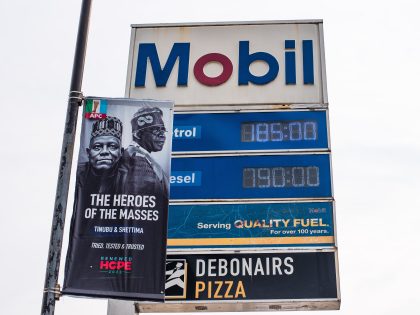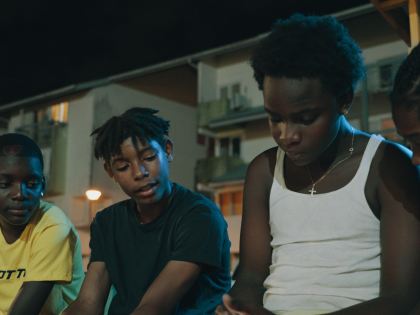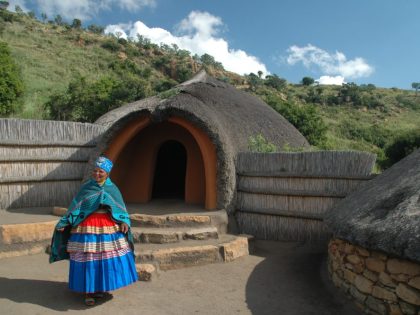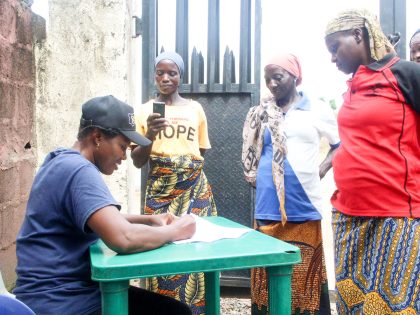Can a woman in hip hop speak on her own terms?
Burni Aman was a member of the all women Godessa hip hop group. Now she is embarking on a solo career. She is intend on speaking for herself.

Godessa's Burni Aman.
The debut album of former Godessa M.C., Burni Aman, “Sweet Science,” is long time coming. While they were together, Godessa – consisting of Aman, Shameema Williams and EJ von Lyrik – stood out as a leading female hip-hop crew from Cape Town, South Africa.
I first interviewed Godessa in 2003 while I was conducting research towards my PhD. In that interview, Williams said that Godessa took its lead from politically conscious hip-hop crew, Prophets of da City (POC), recognized as pioneers of rapping ‘in the vernac’ [mother tongue] and hip-hop activism in South Africa. Godessa followed suit by addressing political themes in their music and by participating in youth development workshops.
Since Godessa split up, it was definitely difficult to establish myself as a solo artist. I had a certain voice, a certain way of expressing myself through music and creatively within the crew and to actually find my own unique voice through the album was a quite a long struggle and journey.
The crew held its own in the largely male-dominated hip-hop scene. Their music video, “Social Ills”, tackled gender politics and consumer culture – setting off debates in academic circles (for example, see my book, Stealing Empire). However, it wasn’t easy for them on the male dominated scene. Some of the criticism leveled at the crew was that they did not battle.
Battling refers to freestyle rap contests in which MCs’ lyrical dexterity, use of humor and insults determine who is the best ‘battle cat’. Masculinist braggadocio is a key element of the impromptu performance and it is hardly surprising that it is male dominated. Hostility towards Godessa was not always qualified, though. In one of my lectures on hip-hop’s gender politics, one hip-hop head blurted out bluntly, “Godessa is whack!” Finished en klaar. On the other hand, Godessa was annoyed that they were expected to bear the burden of speaking for all women in hip-hop – a gendered variation of the burden of blackness in which certain black people are expected for all black people, as diverse as they are.
Aman reflects diplomatically:
We live in a very patriarchal society where females are expected to take more of a side role … I am not saying male [hip-hop] heads support other male heads more, but they have certain ideas of what they might perceive a female MC to be.
Godessa’s work in the early to mid-2000s came at a time in which there was a growing recognition that hip-hop activists had a role to play in gaining the youth’s attention and critically engaging with the ways in which marketing and advertising campaigns target the youth. For example, Bush Radio hosted the oldest hip-hop show, Headwarmaz. This show was used as a platform to draw enthusiasts into a critical theory workshop, ALKEMY, headed for former POC MC Shaheen Ariefdien and Nazli Abrahams. By this time, Black Noise’s Emile YX? had established Heal the Hood, which arranged workshops that focused on hip-hop and life orientation.
Globally, culture jammers (like Adbusters) helped to generate this awareness, while locally outfits like Laugh It Off Media spoofed a range of brands (including Carling Black Label) aimed at the youth market. At the same time, advertisers were using hip-hop to sell anything from beer to energy drinks to branded clothing. The story of hip-hop’s commercial co-option was not far away.
Abroad, spoken word artists like Saul Williams and Sarah Jones offered gender and race critiques of hip-hop’s commercial co-option via ‘gangsta’ rap’s stereotypical representations of black masculinity and embrace of consumer desire. A classic exhortation from Saul Williams on “Apocalypse” on his first album, Amethyst Rock Star, “My people, let Pharaoh go!” Are we clinging to our oppressors / the things that oppress us?
Godessa’s work spoke to this critique of consumerism and brand fetishism, and contested dominant representations of ideal femininity. Their work took on both race and gender body politics:
Switch the norm from light to dark
Don’t you know Adam and Eve draped leaves from the start? It’s hard to think why you don’t wear what you like
You wear what you think they think is tight
And I don’t think it’s right to find replicas of Jennifers all over the world
Every boy and girl’s as fake as extensions and curls.
This was taken up in publications, such as the feminist journal Agenda, which published a special issue on urban culture that helped to make the female contribution to youth culture visible.
Their 2009 break-up left each MC to face the harsh realities of the poor support women receive in the music industry. Aman, EJ von Lyrik, Kanyi, Miss Celaneous, Patti Monroe, Black Athena, Evesdrop and Shameema Williams are the most prominent Cape female MCs – just about eight of them.
While Aman’s attempts to crowdsource funding for her album were not very successful in South Africa, her ties with the Swiss hip-hop scene actually gave her access to production tools and resources that many local heads would not normally be able use – unless they were comfortably middle class.
Quality studio equipment aside, Aman worked with a choice selection of Swiss producers along with musicians from Egypt, Senegal, the US and Italy. The band’s soul, funk and jazz aesthetics are put to work on lyrical and poetic tracks like “Die Kaa” (a Ghoema track), “Darknessbright” and “Summerbreeze”.
But my favorite is the sexy “Ultimate Song”, which has Burni letting her imagination run free with thoughts of what her ultimate song would sound like and where it would take the listener – referencing Coelho, even. This song suggests that play, aesthetics and message are not mutually exclusive. I’m reminded of Chilean rapper Ana Tijoux’s sensual “Delta” (who shot to international fame when her music featured in Breaking Bad) or Hemel Besem’s “Verskillende Tafels”. Who says ‘conscious’ heads should be just one thing?
She parodies the ‘blacker than thou’ crowd to question how we measure political consciousness on the track “Black”. Do head wraps, Afros and Ché T-shirts make you black? Or reading black authors? Making the call for claiming your agency in the act of self-definition beyond the use of superficial surface signifiers of race, Burni sums it up, “Everybody’s got their own definition of black / but don’t let anybody tell you how to act.” “I love your blackness,” she repeats in the fade-out with a hint of irony.
For Aman, we need to accept our dualities and complexities. Female artists should be able to express themselves on their own terms without being judged by a set of standards that stifle them.
It sounds as if she is taking on Du Boisian ‘double consciousness’ in both gender and racial terms. Writing about the dehumanization of racist discursive practices in post-slavery US, W.E.B. Du Bois says that African Americans have a form of double consciousness. They have to negotiate seemingly mutually exclusive identities to: the fact of their blackness and their American identities. In their interaction with white America, they are aware of how white citizens see them. This is in conflict with how they see themselves and the agency that they wish to assert in the act of self-definition. They are forced to measure themselves by the “tape of a world that looks on in amused contempt and pity.” Aman refuses to measure her soul by the tape of an essentialist world that presumes to speak for and position her.












